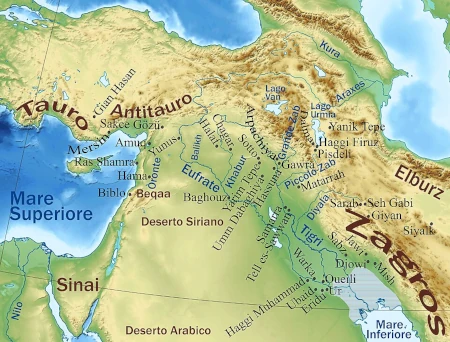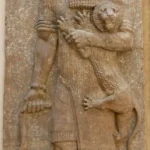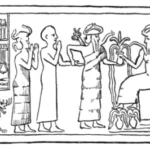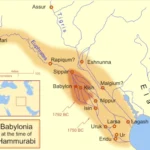In my previous articles on the Sumerians and other ancient Mesopotamian civilizations, I attempted to argue that the “sudden” development of society and civilization, which began around 4000 BC, was linked to the intervention and assistance provided to humans by extraterrestrials.
Considering that the Flood actually occurred on Earth around 10,500 BC and wiped out almost all life from its surface, one must wonder what happened next.
The period between the Flood and the advanced Sumerian civilization is approximately 6,500 years (10,500–4000 BC).
The people who survived the Flood began to reproduce and, after many years, if not centuries, began to form the first new societies. But it’s a long way from communities, communities, and villages to the construction of the large, brick-walled cities of ancient Sumer. At that time, people built only small houses of sun-dried bricks.
The obvious bridge between these two time markers is the Ubaid Culture.
The Ubaid Period, or Obeid Culture, is the name of the last period of prehistory in Mesopotamia, lasting from approximately 6200 BCE to approximately 3800 BCE, derived from the name of the Tell al-Ubaid archaeological site in southern Iraq.
The Ubaid period has been divided into six phases:
– “Ubaid 0” (ca. 6200-5500 BCE) – considered the earliest
– “Ubaid 1” or “Eridu” (ca. 5500-5000 BCE) – a phase confirmed only at sites in southern Mesopotamia on the lower Euphrates (Ur and Eridu).
– “Ubaid 2” or “Haji Muhammad” (ca. 5200-5000 BCE) – this phase encompassed the entire territory of southern Mesopotamia.
– “Ubaid 3” or “Ubaid” (ca. 5000-4800 BCE) – a phase confirmed not only for sites in southern Mesopotamia but also extended far north (including as far as Nineveh and further towards Lake Urmia), meaning in this case we are dealing with a pan-Mesopotamian archaeological culture.
– “Ubaid 4” or “Late Ubaid” (ca. 4800-4300 BCE) – closely related to the previous pan-Mesopotamian phase; essentially, the difference between these phases (3 and 4) lies in the decorative style of the pottery.
– “Ubaid 5” (ca. 4300-3800 BCE) – This is a transitional period between the Ubaid culture and the Uruk period, hence the chronological framework of this phase overlaps with both the previous and subsequent periods.
Given the obvious fact that Sumerian cities such as Ur, Uruk, Eridu, Larsa, Lagash, Nippur, and later ones further north required a large workforce and architects to plan them. It is unlikely that they were built by hunter-gatherer peoples. This requires teachers with a higher degree of intelligence, which at that time was possessed only by extraterrestrials.
However, the Ubaid culture is good evidence of the post-Flood transition from a hunter-gatherer society to the builders of the great cities of ancient Sumer.
It is also possible that the civilizational leap that took place in ancient Sumer was the work of intelligent extraterrestrial beings, whose existence still cannot be confirmed or ruled out.
Based on material from Wikipedia; License: Creative Commons: Attribution-ShareAlike
The image “Neolitic ceramic, calcolitico e bronzo antico nel Vicino Oriente” is from Wikipedia; License: Cc-by-sa-3.0,2.5,2.0,1.0, GFDL.
See also:
https://en.wikipedia.org/wiki/Flood_myth
https://en.wikipedia.org/wiki/Ubaid_period
https://www.britannica.com/place/Tall-al-Ubayd






No likly, its doesnt make sense